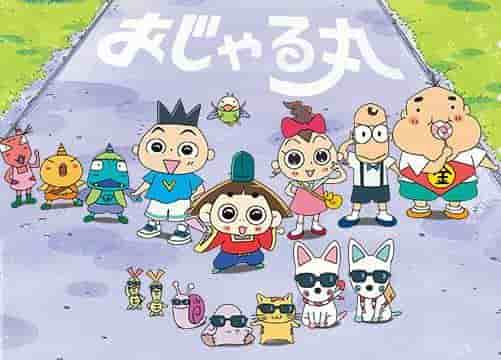Urashima Taro: A review and recommendation of a modern anime that depicts inspiration and lessons

Urashima Taro■ Public Mediatheater ■ Original MediaAnime Original ■ Release dateOctober 1952 ■ Number of EpisodesEpisode 1 ■ DirectorYoshitaro Kataoka ■ Production Japanese Visual Aids Films ■Explanation Previously, it was produced in 35mm and a reduced print was made in 16mm for schools, but this time it was produced in 16mm color from the start. Apparently, there were complaints that the scene in which a girl appears from a shell and does a half-stomp dance at the welcoming party for Urashima Taro in the Dragon Palace was too realistic and not suitable for schools. ■ Main staffScreenplay: Yoshiya Murakami; Illustrations: Fumiaki Kamikane, Taeko Kaieda, Masako Okamoto, Masaaki Abe, Keiko Saito, Toyoki Shirahama, Masataka Ishikawa; Cinematography: Kozo Yamada; Music: Nobuyuki Takeoka, Columbia Orchestra; Sound: Toa Seiei Eiga Co., Ltd. Urashima Taro - Detailed evaluation and recommendation of Urashima TaroOverviewReleased in 1952, Urashima Taro is a historic work in the history of Japanese animation, especially praised for its unique visuals and storytelling. The film is based on the traditional Japanese folktale Urashima Taro, but is known for boldly incorporating original elements for the animation. It was directed by Yoshitaro Kataoka and produced by Nippon Visual Educational Materials Films and S.C.P. It was released in theaters as a one-episode short animation. Production background and technologyRather than downsizing the film from 35mm to 16mm for schools, Urashima Taro was produced in 16mm color from the start. This was a technological innovation at the time, allowing for more vivid colors and detailed depictions. The production staff also included a stellar lineup, including screenwriter Murakami Yoshiya, animation by Uekane Fumiaki, Kaieda Taeko, Okamoto Masako, Abe Masaaki, Saito Keiko, Shirahama Toyoki, and Ishikawa Masataka, cinematographer Yamada Kozo, music by Takeoka Nobuyuki and the Columbia Orchestra, and sound by Toa Hatsu Sei Eiga. The cooperation of these staff members ensured the film's high quality. Story and CharactersThe story is based on a traditional folk tale in which Urashima Taro is rescued by a turtle and invited to Ryugu-jo Castle. However, this production adds a scene in which a girl emerges from a shell and performs a half-stomp dance at the welcoming party in Ryugu-jo Castle, giving it a strong visual impact. The scene was so realistic that complaints were received that it was inappropriate for school use. This bold production provided a fresh surprise to audiences at the time. Visuals and MusicVisually, the use of 16mm color film allowed for a colorful depiction of Ryugu-jo Castle. In particular, the undersea world and the luxurious interior of Ryugu-jo Castle are visually very captivating. Additionally, the beautiful melodies by Takeoka Nobuyuki and the Columbia Orchestra enhance the work as a whole. The music is used skillfully to match the development of the story, and plays a role in enhancing the emotions of the viewer. Evaluation and impact"Urashima Taro" was highly praised for its innovative technology and bold direction. In particular, the use of 16mm color film had a major influence on later animation production. It was also used as an educational film for schools, and played a role in introducing traditional Japanese folk tales to many children. However, some scenes were deemed inappropriate for school use, which contributed to casting a shadow over the film's reputation. Nevertheless, this work occupies an important place in the history of Japanese animation films. Recommendations and how to watch"Urashima Taro" is an animated film based on a traditional Japanese folk tale and is recommended for a wide audience. It is especially a must-see for those interested in the history and technology of animation. It is also useful as an educational film for children, but some scenes may be considered inappropriate, so we recommend that you check the content before watching. The film is currently available on DVD and online streaming services. You can enjoy the traditional Japanese folk tale while experiencing the technological evolution of animation. Related works and recommendation listIf you enjoyed Urashima Taro, we also recommend the following related films, which are also based on traditional Japanese folk tales and offer beautiful visuals and clever storytelling.
summary"Urashima Taro" is an animated film released in 1952, and is praised for its innovative technology and bold direction. It is full of elements that have a strong visual impact, such as the use of 16mm color film and the half-strike dance scene in Ryugu-jo Castle. Based on a traditional Japanese folk tale, this work is recommended for a wide range of audiences, and is a must-see especially for those interested in the history and technology of animation. By watching related works as well, you will be able to further understand the charm of Japanese folk tales and animation. |
<<: The appeal and reviews of "Kujira": A deep story and beautiful images
Recommend
The appeal and reviews of "Tsuki no Wa Guma": A moving story and deep characters
Moon Ring Bear - Moon Bear overview "Tsuki n...
A thorough review of the company trip episode that comes with the OAD included in the special edition of volume 11 of "Wotakoi: Love is Hard for Otaku"!
"Wotakoi: Love is Hard for Otaku" Volum...
Julia Garner to star in Madonna biopic
Madonna's untitled biopic has entered the pre...
"Wind, Forest, Fire and Mountain" will be released in December starring Tony Leung Ka Fai, Takeshi Kaneshiro and Louis Koo
Recently, Chen Luochao, the producer of the movie...
Shoko Nakagawa joins the cast! The ED theme song for the new Pokémon theatrical version "Mewtwo Strikes Back Evolution" has been confirmed
The latest Pokémon theatrical movie animation fro...
Birds of Prey officially changed its name due to poor box office performance, but only on ticketing websites
Recently, AMC and Regal and other ticket websites...
Impressions and reviews of the second episode of "Girls & Panzer Final Chapter": A new development in tank warfare
The appeal and evaluation of "Girls & Pa...
"Nezha: The Devil Child Comes into the World" extended its release for one month, and its box office hit the top three in Chinese film history
Recently, China Film released a notice that accor...
Review of "Katana Maidens": A moving world woven with charming characters and a grand story
Toji no Miko - Toji no Miko - Detailed Review and...
Banner of the Stars Special Edition: In-Depth Review and Recommended Points
Starry Sky Special Edition - The Tale of Space Wa...
The cast of the comic-adapted Hong Kong film "Kowloon Walled City: Besieged" is announced, with Louis Koo and Raymond Lam starring
Recently, according to Hong Kong media reports, t...
The appeal and reviews of "Mahoromatic": A moving story and deep characters
"Mahoromatic" - A story of bonds and gr...
Four years later, the leading actor of the thriller film "The Invisible Man" revealed that the sequel of the series is still in production
The thriller "The Invisible Man", produ...
Working Brother! 2! - A thorough analysis of the sequel's appeal and evolution
All-round review and recommendation of Working Br...
The fourth episode of "Chinese Tales" has exceeded 100 million views and is now online
Today (January 16), the official Weibo account of...









